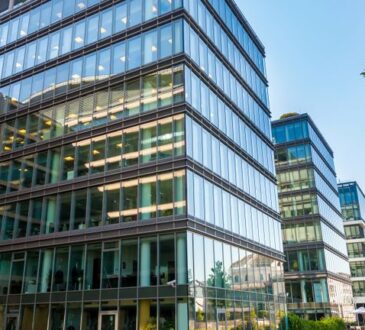India’s data center capacity crossing 4,500 MW by 2030 as investments surge to $25 billion – Industry News
India’s data center (DC) capacity is projected to surpass 4,500 MW by 2030, fueled by accelerating digitalization, supportive government policies, and a significant rise in data consumption. This expansion is also expected to create demand for approximately 55 million square feet of real estate over the next five to six years.
According to a report by Colliers, much of this new capacity will come from large facilities exceeding 50 MW, which are expected to constitute nearly two-thirds of the total DC stock by the end of the decade. Real estate and construction costs are projected to account for around 30 to 40 per cent of the total development expenses.
India’s data center investments expected to reach $20–25 billion
To meet this demand, the data center industry is set to attract investments between $20–25 billion by 2030. Between 2020 and April 2025, India secured $14.7 billion in data center investments, with foreign institutional investors contributing approximately 86 per cent of the total. Mumbai and Chennai together received 61 per cent of this capital inflow.
India’s data infrastructure sees 3.6X growth since 2020
As of April 2025, India’s total DC capacity across the top seven cities stood at 1,263 MW, spread across nearly 16 million square feet. This marks more than a 3.6X growth in capacity since 2020.
Mumbai remains the largest DC hub, accounting for 41 per cent of the total capacity, followed by Chennai (23 per cent) and Delhi-NCR (14 per cent). Combined, Mumbai and Chennai represent close to two-thirds of India’s DC landscape.
Tier II and III cities emerging as new hubs
Smaller cities like Vijayawada, Mohali, and Jaipur are emerging as new destinations for data infrastructure, driven by the need for low-latency services and state-led digital policies. As of April 2025, these Tier II and III cities collectively accounted for 82 MW or about 6 per cent of India’s total DC capacity. This figure is expected to grow to 300–400 MW over the next five to six years.
Green-certified data centers expected to reach 30-40 per cent by 2030
India is also witnessing a shift towards sustainable data center operations. Currently, 25 per cent of DC capacity is green certified, with expectations to increase to 30–40 per cent by 2030. As of April 2025, green-certified DC capacity had nearly doubled from 159 MW in 2020 to 314 MW, with Mumbai and Chennai making up almost three-fourths of the total.
Operators are adopting low-emission materials, energy-efficient cooling systems, and advanced airflow design to improve efficiency and reduce carbon emissions.
Edge data centers to hit 400 MW by 2030
The rollout of 5G and increased focus on edge computing are expected to significantly boost edge DC capacity—from about 60–70 MW in 2025 to 300–400 MW by 2030. Edge DCs are smaller facilities located closer to end-users, enabling faster processing and lower latency for real-time applications, especially in Tier II and III cities.
This segment is poised to grow at a compound annual growth rate (CAGR) of 35–40 per cent over the next five years. More than 200 edge facilities are already planned across the country by leading operators.
Government policies and investments accelerating data center capacity
The growth of the DC industry is underpinned by strong policy backing. Initiatives such as the Digital India Mission, National Broadband Mission (2.0), and the Data Protection Bill 2023 are strengthening India’s digital infrastructure. Since 2022, the industry has held infrastructure status, allowing easier access to funding and encouraging further development.
“India’s DC market is likely to mature amidst increasing demand, supportive government policies and country’s continued commitment towards digital transformation. In the coming years, the demand for high density rack configurations & advanced computing infrastructure will further rise,” said Vimal Nadar, National Director & Head of Research, Colliers India.





